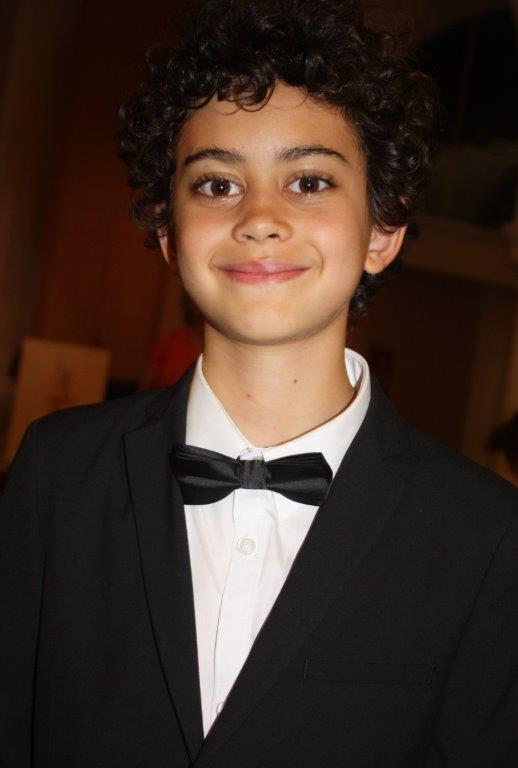Music for the Soul: the triumph of Trio Bourgas
By James Brewer
A friendship between three girls brought up in the Black Sea city of Bourgas has blossomed into full maturity as they reunited in the UK, now all accomplished and celebrated musicians.
Summoning all the attainments of their individual careers, the three women conquered the hearts of a discerning audience in London in their collaboration under the new identity of Trio Bourgas, a concept they say which “grew out of the sand grains of the mesmerising Bay of Bourgas.”
A brilliantly-presented programme entitled Music for the Soul earned a standing ovation for Sally Wave at the Bechstein piano, cellist Petia Kassarova and Joy Tedford, violin.
Sally welcomed Petia and Joy, who both pursue their vocations in the US, to what is now her home ground of Wimbledon for a magnificent and memorable concert in the auditorium of the suburb’s Holy Trinity Church.
This was a spell-binding evening from the first note. Sally’s dazzling mastery of the keys and the immeasurable talents of Joy and Petia combined to bring their listeners emotionally close to tears.
The luminescent, photogenic trio turned in a world-class, shimmering performance for 80 magical minutes on a balmy evening, July 20, 2018.
Devoting proficient and minute attention to detail, their readings were as though engendering teeming, carefree caresses to the luscious sequences of harmony.
Revelling in the thrill of their reunion, the trio cascaded their technique nimbly through an eclectic programme, a juxtaposition of eras and genres. The medley was balanced into a living, breathing whole. Such was the humanity manifest in every line, it was as though the music was speaking for the first time.
They plunged headlong into the programme – the jumping-off points were two movements from the piano trio no 2 in E minor composed in 1892 by Camille Saint-Saëns (1835-1921) setting the tone for the tremendous excitement that permeated the evening. The three performers swung confidently into the passages of nobility, yearning and sophisticated scintillation, that unites the 18 minutes of the two movements.
Such drive seemed of a piece with what followed, the first movement of Mozart’s piano trio in B flat major of 1786, the allegro a convincing dialogue between piano and strings from which the three with élan plucked the maximum vitality.
Then came the pivotal episode of the recital, in 13 minutes of pure enchantment and éclat: the Trio élégiaque No 1 in G minor written by Sergei Rachmaninov in January 1892 in Moscow when he was 19 years old. Remarkably, it was 1947, four years after the death of the composer, before this polished, one-movement gem was formally published.
Within the one movement, the themes unfold to journey through più vivo – con anima – appassionato – tempo rubato – risoluto. The ensemble is led through the rapture by the piano’s lento lugubre of four of the most hauntingly beautiful notes ever announced, as piano and strings coalesce in a partnership made in heaven.
After this elegiac intensity, and an interval for the awe-struck audience, there was a brisk resumption of proceedings into the intended lighter mood of the second half. The trio eased into the Slavonic Dance in E minor, Op 72 no 2 written by Antonín Dvořák in 1886. Over the years this classic has been variously arranged for piano duet, for two or three violins and cello, and for orchestra. A contemporary reviewer wrote of the two beguiling sets of Slavonic dances, “there is not a trace of artificiality or constraint,” and the Trio Bourgas rose to the challenge of playing to that standard.
The tempo took a more romantic turn with the short piece by Isaac Albéniz, Tango in D, Op 165 No 2. Originally written for piano, and later popularised for guitar, from the1890 suite “of album leaves” España, our heroines proffered this sweet melody before tackling a radically different take on the tango.
No shred of doubt about the virtuosity and versatility of Trio Bourgas could remain as they struck up the first of two selections from Astor Piazzolla (1921-1992), the Argentine composer who revolutionised the traditional tango of working-class dancehalls into nuevo tango, blending elements from jazz and classical music.
Piazzolla’s creations centred on the concertina-like bandoneon, so anyone familiar with mainstream recordings would be curious to hear how a transcription for piano, violin and cello would work. That is one of the less frequent versions among different instrumental combinations. In sum: the teamwork of Sally, Petia and Joy continued the revolution.
First, they essayed what can be described as music from, rather than for, the soul. This was Oblivion, recorded in 1982 with an orchestra in Italy for the film Enrico IV, and characterised by long-held notes alternating with slowly falling and weaving figures.
Next, they animated the tricky rhythms of Libertango, first recorded in Milan in May 1974 at the start of Piazzolla’s most experimental period. The title merges the Spanish word for liberty with the word tango.
Given their roots, it was appropriate that the members of the Trio Bourgas concluded with a lively work by Petko Staynov (1896-1977) who was influential in developing a musical style echoing the emergence of a distinct Bulgarian identity after five centuries of Ottoman rule, during which the country had little exposure to Western musical culture.
The choice was the final part of Staynov’s 1925 suite Thracian Dances, which quotes themes from village and Gypsy life, in this instance a dance known as Rachenitsa. This series contrasts with later works where Staynov devised new motifs in the spirit rather than the letter of Bulgarian folklore. Its inclusion here serves as a reminder of the crying need for Western European music to explore and expound the works of Staynov and his contemporaries.
Resounding applause called the three back on stage for an encore, which was announced as the popular Salut d’Amour Op 12 composed by Edward Elgar in 1888. Written for violin and piano, it was an engagement present for his future wife Alice and called Liebesgruss (Love’s Greeting) as a tribute to her fluency in German.
Getting the three, who were educated at the same time at Sofia’s National Music Academy, together again was a year in the planning, and this was the first time in London for Petia and Joy. The academy to which they owe much of their musical acuity is named after Pancho Vladigerov (1899-1978) a composer imbued with national spirit who brought the piano trio and violin sonata to prominence in Bulgaria.
In addition to her time at the academy, Sally Wave’s education included participation in the renowned master class at Hochschule für Musik Franz Liszt, Weimar, under the guidance of Prof Rudolf Kehrer, who had a 40-year recording career. She was a soloist and chamber musician in Sofia and a teacher of piano students at the Bulgarian National School of Culture, furthered her career on moving to the UK in performance and as an educator, successfully preparing students for scholarships and exams.
A chamber musician, orchestral player and teacher, Petia Kassarova took up the cello at the age of 10, going on to win prizes at many competitions in Bulgaria and to be a concerto competition winner at the University of Massachusetts.
She was a member of the Vidin Philharmonic Orchestra, based in the town of Vidin 200 km from Sofia in the northwest of Bulgaria on the banks of the Danube, and toured with that entity in Western Europe.
Before arriving in America, she spent a year and a half in Brazil and was a principal cellist of the Orquestra Sinfônica de Ribeirão Preto, a large city 300 km from São Paulo and where she was professor of cello at the musical academy. She received her Master’s Degree in music from the University of Massachusetts, and holds an artist diploma from Duquesne University, Pittsburgh.
Petia Kassarova is now a member of the Albany Symphony Orchestra and is a founding member of Musicians of Ma’alwyck, a chamber ensemble in residence at the Schuyler Mansion New York State Historic Site and Schenectady County Community College – she is on the college faculty.
Founded in 1999, Musicians of Ma’alwyck specialises in music performed in America during the 18th and 19th centuries, with many of its performing materials drawn from the Special Collections of the New York State Library. It is described as a flexible-repertoire ensemble – at one performance, a painter was invited on stage to finish a portrait of his wife while the group played.
Joy Tedford, who lives in Georgia, plays with the Tallahassee Symphony Orchestra, based in the state capital of neighbouring Florida. She was for many years in Texas with Lewisville Lake Symphony and Richardson Symphony orchestras and was for 15 years a principal violinist with the Richardson String Quartet.
She has been playing violin since the age of four, and between eight and 18 won several competitions including the Svetoslav Obretenov and Yan Kozian events in Bulgaria and the Czech Republic respectively. At the latter, Joy and Sally at the age of 13 collaborated for the first time, and Sally received special mention as the youngest chamber musician and accompanist.
Joy was as a soloist with Bourgas Philharmonic Orchestra, and after graduation toured with orchestras around Europe and was a member of Plovdiv Symphony Orchestra and Plovdiv State Opera.
The event in Wimbledon was sponsored by A Hanna & Sons Pianos and compered by its managing director Fadi Hanna. At the close of the evening, Mr Hanna said of the trio and their interpretations: “They played from their heart. You can see that they have this commitment in their spirit. My heart was throbbing, my mind was jumping.”
As a curtain-raiser, there were short pieces from three of the main winners from Wimbledon International Piano Competition, which was founded in June 2018 by Sally Wave and organised by Mr Hanna. The young performers were Andrew Zheng, Zhe Fan Ma (both eight) and Alexander Brown (10). Mr Hanna said of the three: “This is the quality we are trying to find. Hanna Pianos will always support a young musician and encourage them.”
It all amounts to a soundtrack of success, and plans are afoot for Trio Bourgas to appear in the US.















